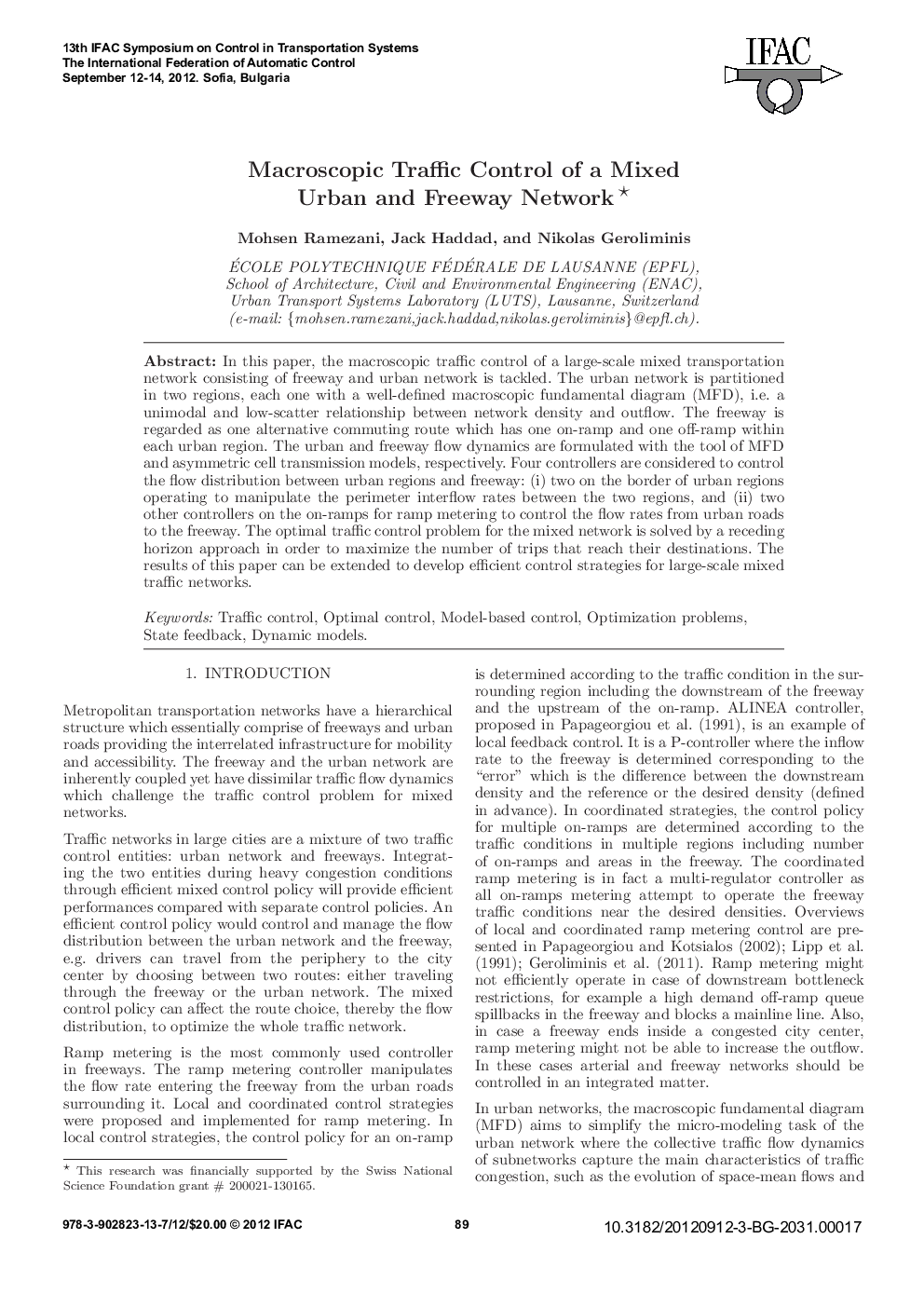| Article ID | Journal | Published Year | Pages | File Type |
|---|---|---|---|---|
| 717156 | IFAC Proceedings Volumes | 2012 | 6 Pages |
In this paper, the macroscopic traffic control of a large-scale mixed transportation network consisting of freeway and urban network is tackled. The urban network is partitioned in two regions, each one with a well-defined macroscopic fundamental diagram (MFD), i.e. a unimodal and low-scatter relationship between network density and outflow. The freeway is regarded as one alternative commuting route which has one on-ramp and one off-ramp within each urban region. The urban and freeway flow dynamics are formulated with the tool of MFD and asymmetric cell transmission models, respectively. Four controllers are considered to control the flow distribution between urban regions and freeway: (i) two on the border of urban regions operating to manipulate the perimeter interflow rates between the two regions, and (ii) two other controllers on the on-ramps for ramp metering to control the flow rates from urban roads to the freeway. The optimal traffic control problem for the mixed network is solved by a receding horizon approach in order to maximize the number of trips that reach their destinations. The results of this paper can be extended to develop efficient control strategies for large-scale mixed traffic networks.
